Last updated on October 4th, 2023 at 07:57 am
There are many flowers in the world that resemble different parts of the human body. For example, did you know that there are some flowers that look like brains? Each flower has a unique name, and it can be found in a variety of colors. In this blog post, we will discuss these brain-shaped flowers and what their names mean. We will also provide pictures of each flower so you can see it for yourself!
Flower that has the closest look like brain is Celosia Cristata, a flower commonly known as the “cockscomb” or the “brain flower.”
Some other flowers which take this unique shape resembling the human brain or coral brain form are:
Table of Contents
1. Celosia cristata (Brain Flower)
The first brain-shaped flower on our list is the Celosia cristata, also known as cockscomb or “brain flower”. This flower gets its name from its ruffled, comb-like appearance. The Celosia cristata is native to tropical and subtropical regions of the world, and it can be found in a variety of colors including red, pink, purple, yellow, and orange.

As you can see, the Celosia cristata does indeed resemble a human brain! If you look closely, you will notice that the flower even has “lobes” just like a real brain.
Celosia cristata is a species of flowering plant in the amaranth family. The colorful flowers are used in a variety of ways, including as decorations and in dried flower arrangements. The petals can also be used to make a natural dye. In addition, the seeds of Celosia cristata are edible and are often ground into flour.
The plant is native to Africa and Asia, but it has been introduced to other parts of the world, including the Americas. Celosia cristata is easy to grow and tolerate poor soil conditions. However, the plant does require full sun to bloom properly. If you are looking for a plant that is both beautiful and versatile, Celosia cristata is an excellent choice.
2. lotus (Nelumbo nucifera)
The second flower on our list is the lotus (Nelumbo nucifera). The lotus is a sacred flower in many cultures, and it is also the national flower of India. This brain-shaped flower gets its name from the Greek word for “lily”. The lotus can be found in a variety of colors including white, pink, and blue.
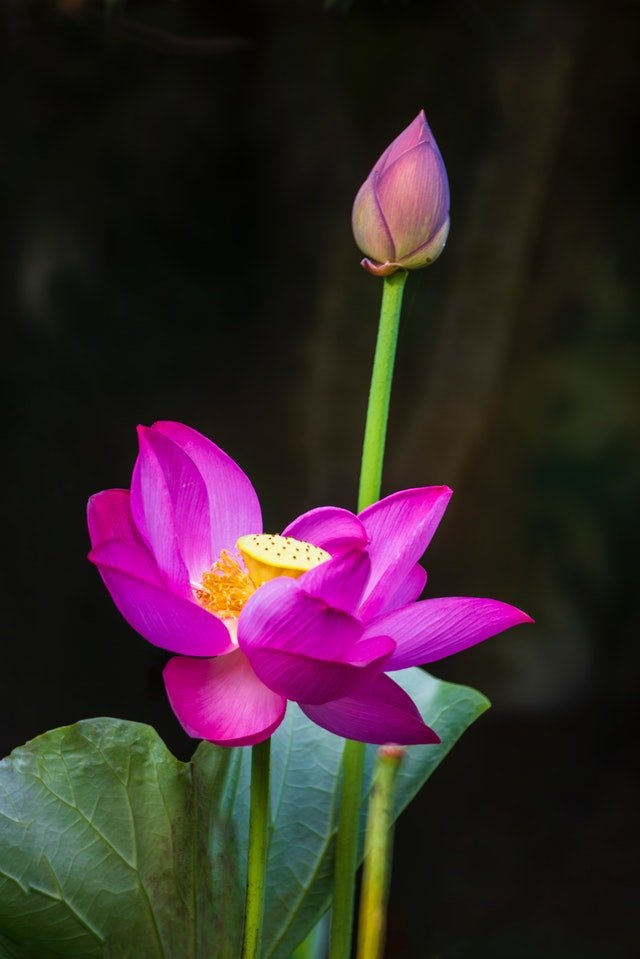
The lotus flower is often associated with wisdom and knowledge. This is because the lotus is known to symbolize “enlightenment”.
The flower doesn’t actually resemble brain form but the seed heads do.
3. Partridge Feather (Tanacetum Densum ssp. Amani)
Partridge Feather (Tanacetum Densum ssp. Amani) is a flower that looks like a brain coral. It is a member of the aster family, and it is native to Morocco. The partridge feather flower gets its name from its feather-like appearance. This brain-shaped flower can be found in a variety of colors including white, pink, purple, and blue.
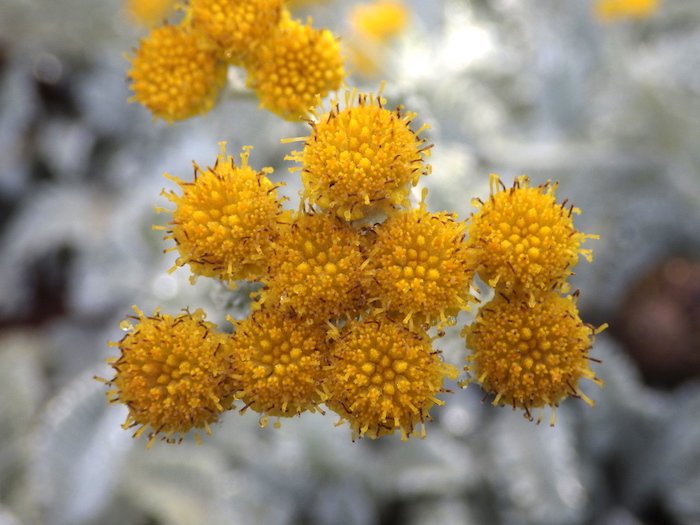
Partridge Feather or Tanacetum Densum flowers are beautiful, unique blooms that can add a touch of elegance to any setting. The feathery petals of the Partridge Feather flower are soft to the touch and range in color from white to deep purple. This delicate flower is often used in bouquets and floral arrangements.
In addition, Partridge Feather flowers can also be used to make potpourri. The strong aroma of the blooms will fill any room with a pleasant scent. Tanacetum Densum flowers are also known for their medicinal properties. The flowers can be steeped in hot water to make a tea that is effective in treating colds and flu.
Additionally, the compress made from the flowers has been traditionally used to relieve pain and inflammation. Partridge Feather or Tanacetum Densum flowers are versatile blooms that can be enjoyed in a variety of ways.
4. Tanacetum Bipinnatum or Dune Tansy
Tanacetum Bipinnatum or Dune Tansy is a brain-shaped flower native to Europe and Asia, and it can be found in a variety of colors including yellow, white, and pink.
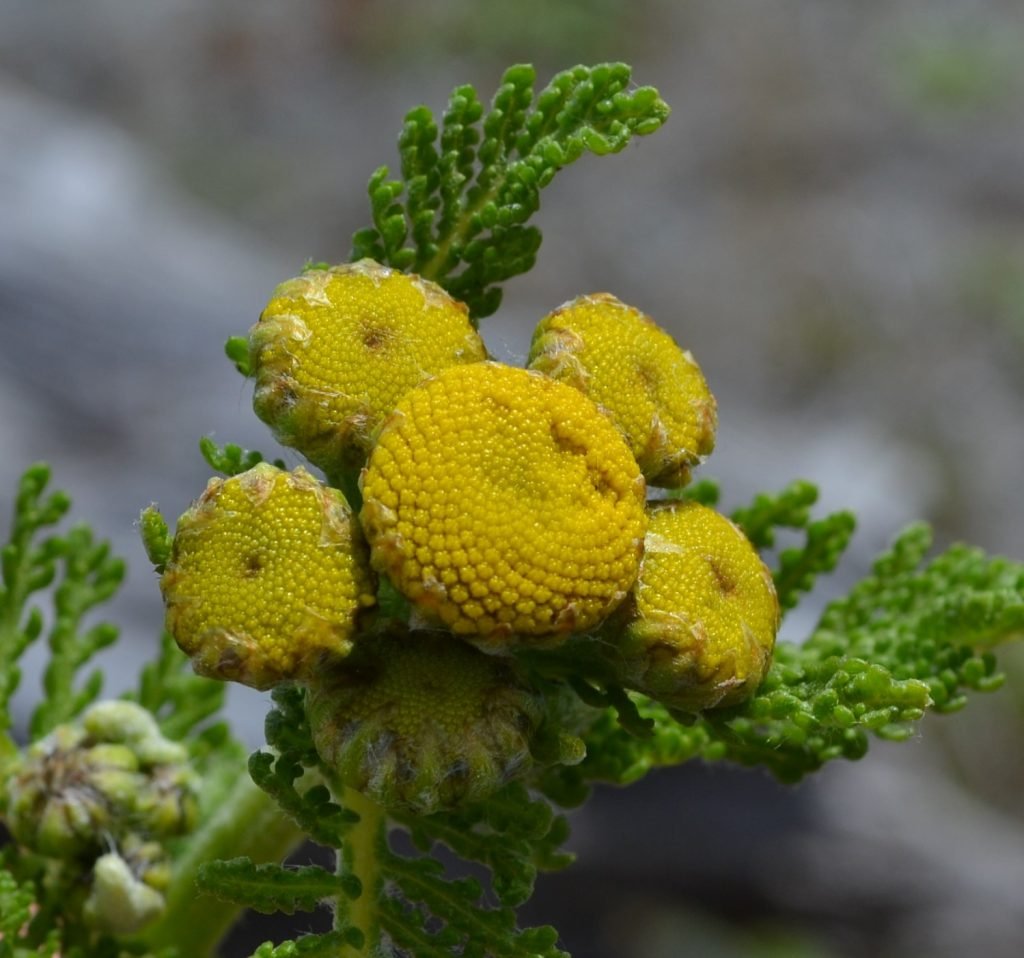
Tanacetum Bipinnatum, also known as Dune Tansy, is a flowering plant in the daisy family. The plant is native to Europe, and it is commonly found on sandy beaches and dunes. The flowers of Tanacetum Bipinnatum are small and yellow, and they typically bloom in the summer months.
The plant has a long history of use in folk medicine, and it is still used today for a variety of purposes. Tanacetum Bipinnatum is thought to have anti-inflammatory properties, and it is often used as a natural treatment for arthritis and other inflammatory conditions.
The flower heads can also be boiled to make a tea that is traditionally used to treat colds, flu, and other respiratory infections. In addition, Tanacetum Bipinnatum is sometimes used as an insect repellent. The essential oil of the plant has been shown to be effective at deterring mosquitoes, ticks, and other pests.
5. Helichrysum Stoechas
The fifth flower on our list is the Helichrysum Stoechas. This brain-shaped flower is native to Europe and Asia, and it can be found in a variety of colors including white, pink, purple, and yellow.
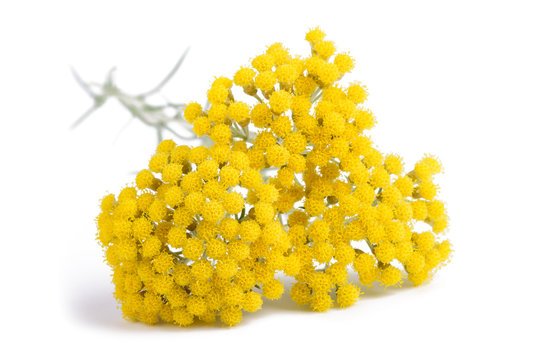
Theaceae family is mainly distributed in tropical and temperate regions of the world. Helichrysum Stoechas, a genus in Theaceae, is one of the most medicinally important plants due to the triterpene acids it produces.
These plant secondary metabolites have a wide range of activities, such as anti-inflammatory, analgesic, hypotensive, and immune-suppressive. Remarkably, the form of H. Stoechas flowers highly resembles that of a human brain. Ancient Greeks used it to treat disorders related to thinking and memory. It wasn’t until recently that Modern science began to value H. Stoeches for its medicinal properties once again.
Today extracts from the plant are commonly used in cosmetics and dietary supplements due to their antioxidant and anti-aging effects. Clinical studies have also shown H. Stoechas to be effective in treating various skin conditions, such as psoriasis and eczema.
6. Rhodiola Rosea
The sixth flower on our list is the Rhodiola Rosea, also known as the “roseroot”. This brain-shaped flower is native to Europe and Asia, and it can be found in a variety of colors including white, pink, purple, and yellow.
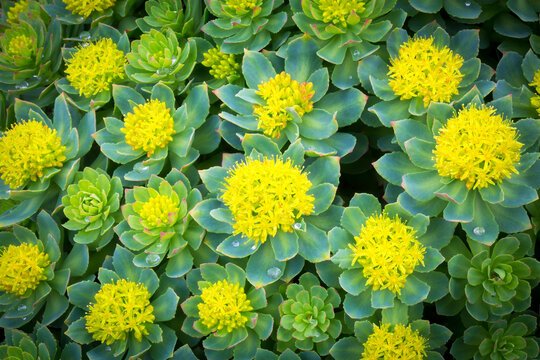
Rhodiola Rosea is an alpine plant that grows in cold, mountainous regions of Europe and Asia. It has a long, thin stem that resembles the form of a human brain. The plant’s leaves are small and linear, and its flowers are yellow or greenish-yellow in color.
Helichrysum Stoechas is a species of flowering plant that is native to the Mediterranean region. The plant has dense clusters of small, yellow flowers that resemble buttons. The plant is often used for ornamental purposes, as well as for making herbal teas and tinctures.
7. Scabiosa atropurpurea
The seventh and final flower on our list is the Scabiosa atropurpurea, also known as the “sweet scabious” or “pincushion flower”. This brain-shaped flower is native to Europe and Asia, and it can be found in a variety of colors including white, pink, purple, and blue.
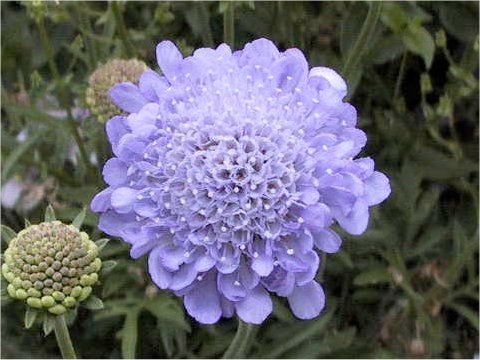
The Scabiosa atropurpurea flower more closely resembles a human brain than any other known flower. The black centers of the flower are especially reminiscent of the ventricles of the brain, while the petals look like lobes of the cerebral cortex. This similarity is likely due to the fact that both plants and humans share a common ancestor.
Despite this resemblance, Scabiosa atropurpurea flowers are not known to have any direct connection to the human brain. However, they have been used traditionally in folk medicine as a treatment for headaches and vertigo. More recently, scientific studies have shown that compounds extracted from flowers can help to protect nerve cells from damage.
Helichrysum Stoechas flowers, on the other hand, are commonly used in essential oils. These oils are believed to offer a variety of health benefits, including reducing inflammation and promoting wound healing. Helichrysum Stoechas oil is also sometimes used as a natural insect repellent. thus, while both plants have interesting connections to human biology, they are used for very different purposes.
As you can see, there are many different brain-shaped flowers that you can add to your garden. Each flower has its own unique name and appearance. So, which one of these brain-shaped flowers will you choose for your garden?

Gardening is my passion and growing plants indoors has always been a stress relief for me. Grow a banana tree in my apartment once (although failed to produce bananas).


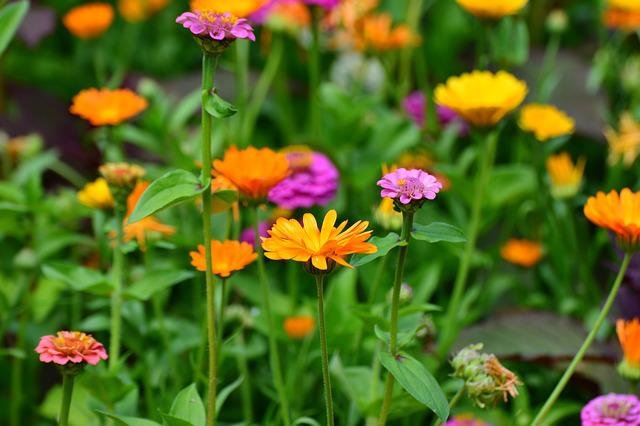
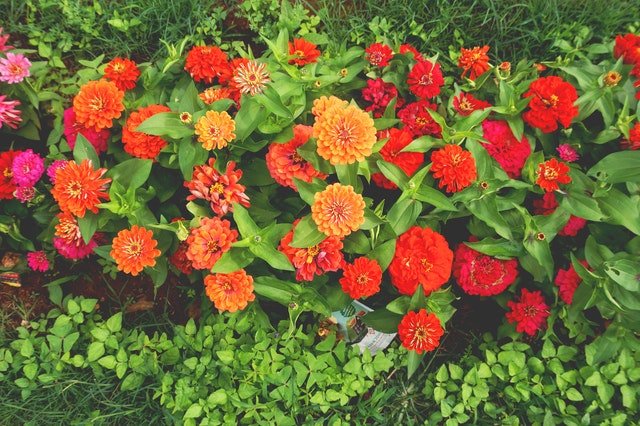

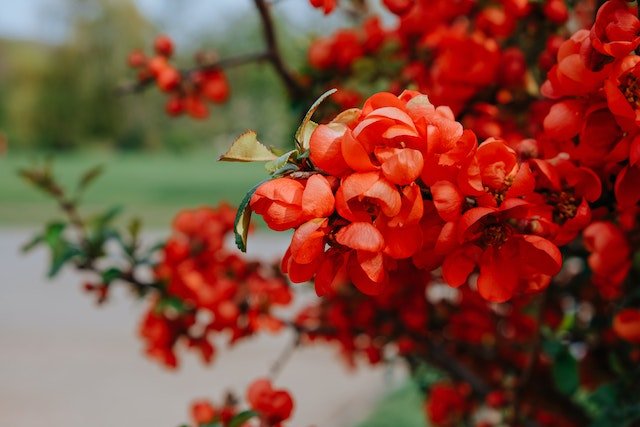

Pingback: Things That Make You Go Eww: Plants and Fungi That Look Like Body Parts
None of this which is Cole flower (vegetable)
Dear Manuel, Thank you for your comment. Yes, none of the plants mentioned is a core flower or vegetable as the purpose of this article is to cover mostly decorative flowering plants. but we really appreciate your comment, will consider creating separate articles for the core flowers which look like brain shapes in the future.